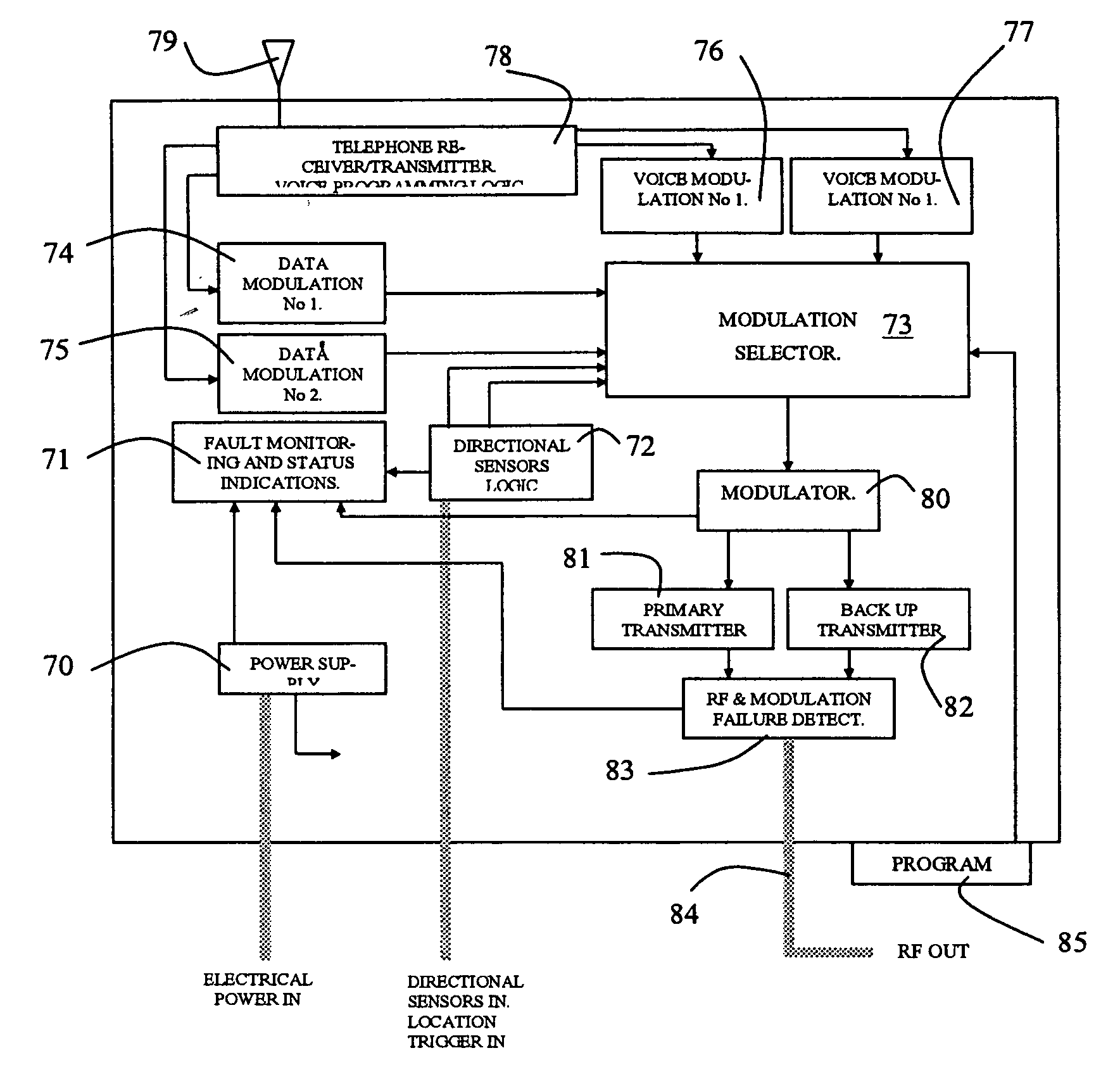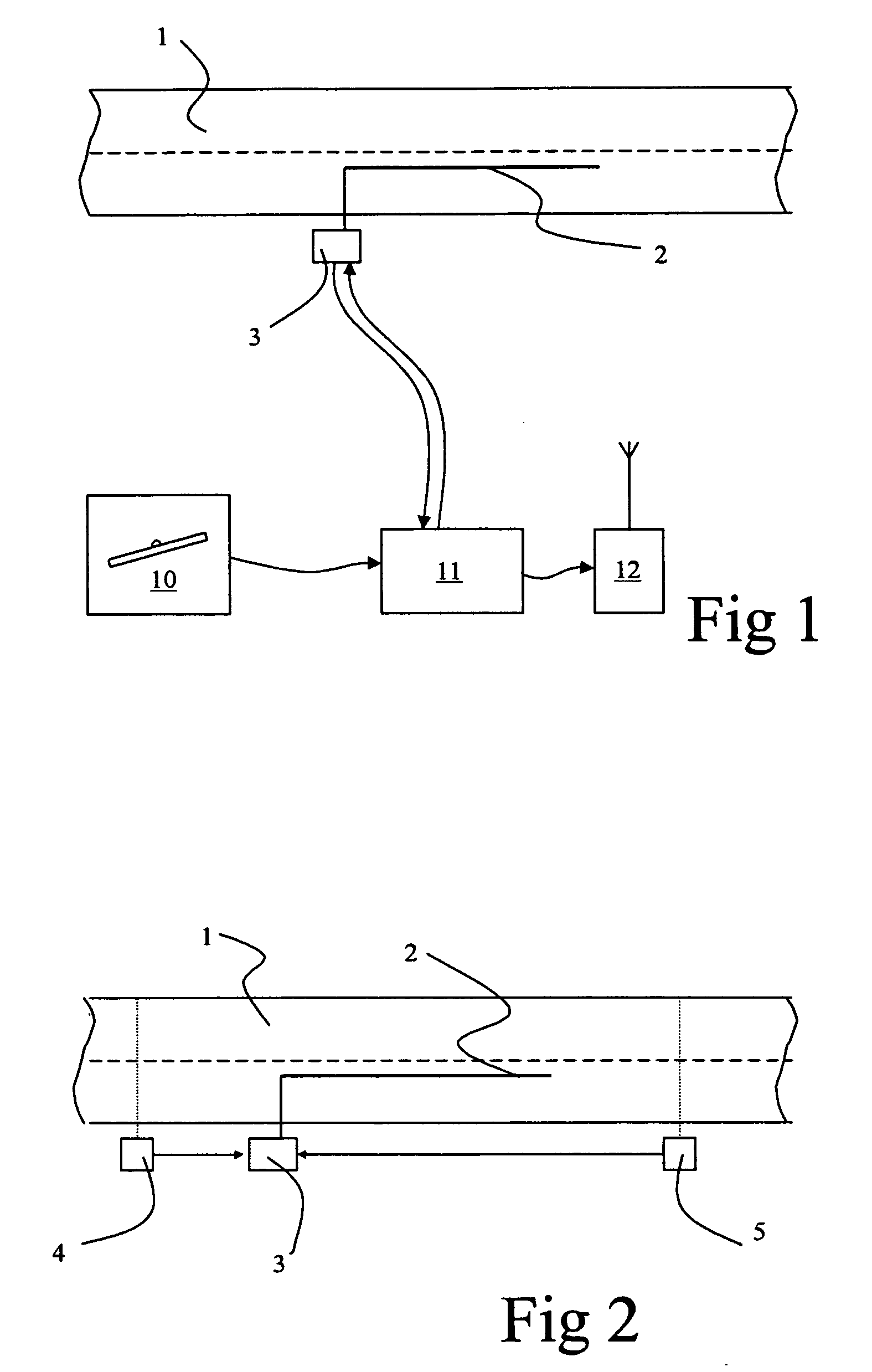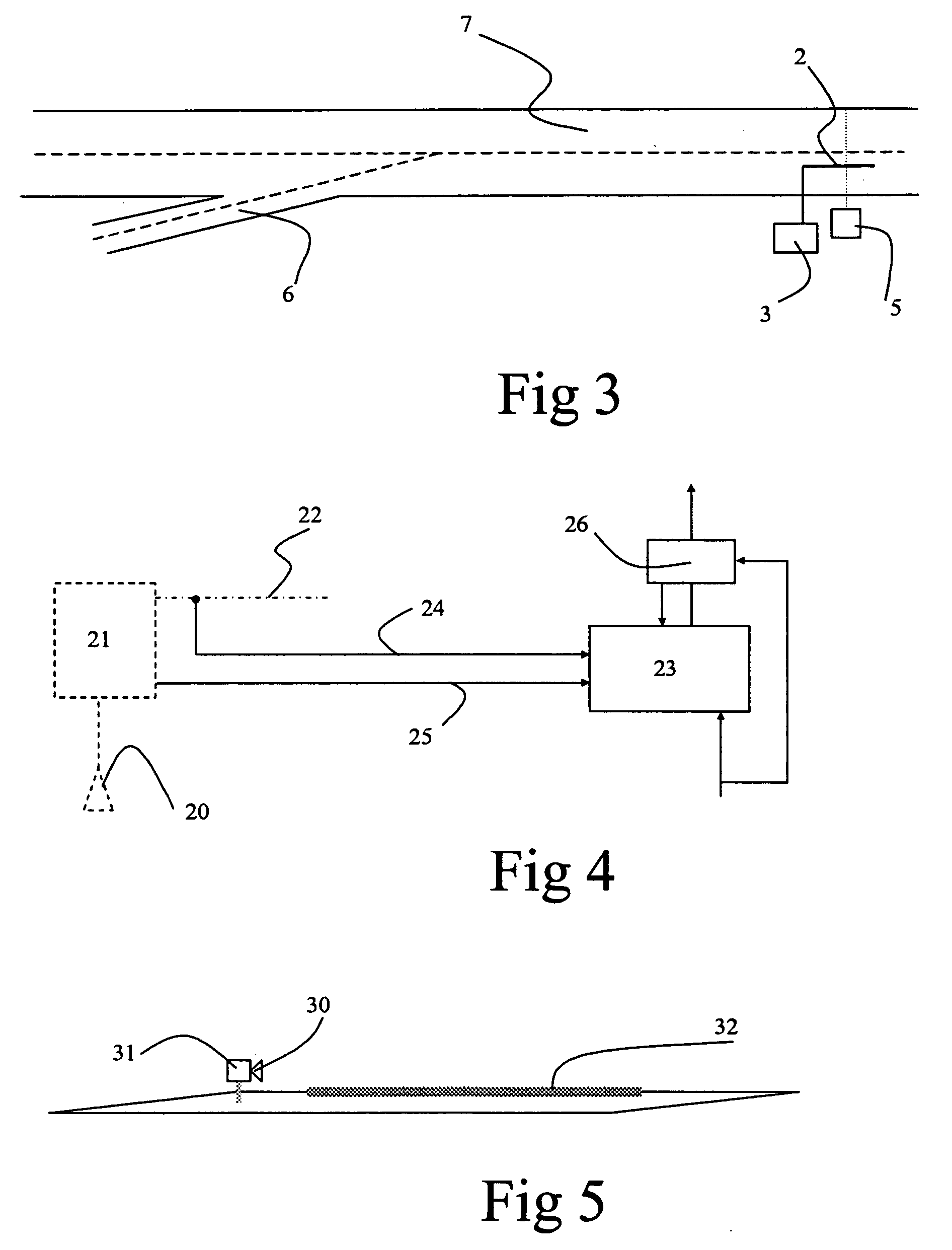Airport safety system
a safety system and airfield technology, applied in traffic control systems, wireless commuication services, reradiation, etc., can solve problems such as excessive landing speed, increased aircraft occupation of main runway, and potential danger situations, and achieve the effect of further enhancing the use of the system
- Summary
- Abstract
- Description
- Claims
- Application Information
AI Technical Summary
Benefits of technology
Problems solved by technology
Method used
Image
Examples
Embodiment Construction
[0028] Referring first to FIG. 1, an airport runway or taxiway 1 has embedded in the surface thereof a radio antenna in the form of a radiating cable 2 fed with a 75 MHz signal from a message transmitting device 3, conveniently located alongside the runway or taxiway and provided with electrical power from the edge lighting system present in most runways and taxiways. The 75 MHz carrier signal from the transmitter is modulated (amplitude modulation, in accordance with standard practice) with a prerecorded voice message giving positional information, for example “Taxiway Golf, Northbound Delta, Southbound Bravo”. The transmitter may simply be arranged to operate passively, in other words repeating the message at regular intervals regardless of the presence or absence of an aircraft in the vicinity, but is preferably provided with means for detecting the presence of an aircraft within range of the signal radiated by the antenna to cause activation of the transmitter. The detecting mea...
PUM
 Login to View More
Login to View More Abstract
Description
Claims
Application Information
 Login to View More
Login to View More - R&D
- Intellectual Property
- Life Sciences
- Materials
- Tech Scout
- Unparalleled Data Quality
- Higher Quality Content
- 60% Fewer Hallucinations
Browse by: Latest US Patents, China's latest patents, Technical Efficacy Thesaurus, Application Domain, Technology Topic, Popular Technical Reports.
© 2025 PatSnap. All rights reserved.Legal|Privacy policy|Modern Slavery Act Transparency Statement|Sitemap|About US| Contact US: help@patsnap.com



